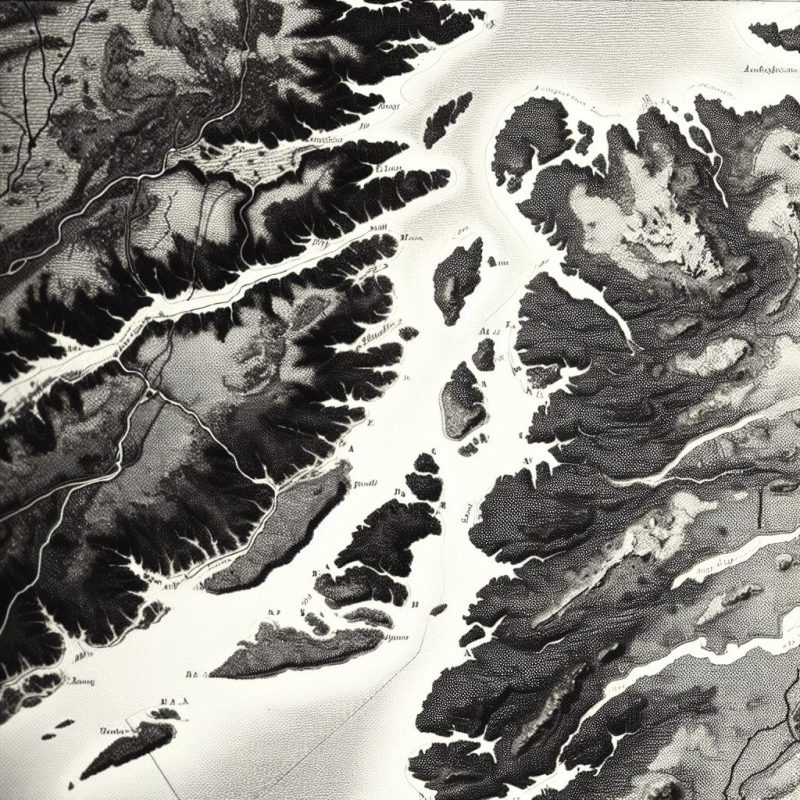Introduction to the Geology of Argyll’s Islands
The islands of Argyll, situated off Scotland’s west coast, possess a captivating geological landscape, reflecting the dynamic Earth processes over hundreds of millions of years. This region forms a part of the Scottish Highlands and Islands, esteemed worldwide for its diverse geological attributes and complex evolutionary history. The study of Argyll offers a lens into Earth’s ancient past, as the geological features present today have been shaped through various geological epochs, revealing fascinating stories preserved in rock formations.
Geological Formation
The geological formation of Argyll’s islands primarily traces back to the Caledonian orogeny, a profound mountain-building phase that occurred around 400 million years ago. This orogeny had a significant impact on the lithology of the islands, with an abundance of metamorphic rocks as a result. The rugged landscapes of Argyll are products of tectonic collisions which forged the distinct geology of this region. The intercontinental movements and crustal deformations that took place during this era are prominently captured through the diverse array of rock types found across the islands.
Metamorphic Rocks
Metamorphic rocks are predominantly featured across Argyll’s islands, with schist and gneiss being the most prevalent. These rocks are products of the intense pressure and heat associated with the Caledonian orogeny. Such conditions led to their distinctive foliated and banded structures. Areas like the Isle of Jura and specific parts of Islay provide exceptional insights into these rock types. These locations serve as open-air laboratories for geologists and students alike, offering vivid examples of Earth’s metamorphic processes in action.
Sedimentary Rocks and Fossils
Conversely, certain sections of Argyll, such as the Isle of Mull, present sedimentary compositions like limestone and sandstone. These types of rock formations typically arise in aqueous environments over vast periods, gradually accumulating and cementing sediment layers. Beyond their lithological value, sedimentary rocks in Argyll house ancient fossils—vital records of previous marine ecosystems that dominated the region. These fossils offer a glimpse into the vibrant and complex life forms that thrived in the ancient seas, turning Argyll into a geological window to Earth’s rich biological past.
Volcanic Activity
Mull offers another dimension to Argyll’s geological landscape through its historical volcanic activity. Around 60 million years ago, periods of tectonic activity led to significant volcanic phenomena, as the nascent North Atlantic Ocean began expanding. Mull’s terrain, characterized by basalt columns and other volcanic remnants, provides poignant evidence of this volcanic chapter. Such structures add to the archipelago’s geological appeal, inviting researchers to delve into the area’s volcanic history, offering clues about the dramatic alterations in Earth’s crust during this time.
Geomorphological Features
In addition to tectonic and volcanic histories, geomorphological processes have extensively sculpted the islands of Argyll. Erosion, driven by both climatic conditions and sea level changes, carved spectacular coastlines, striated rock formations, and scenic glens. Glacial activities, playing a pivotal role during the Pleistocene epoch, further etched deep gouges and valleys, reshaping the topography into its present form. Such processes also led to remarkable natural spectacles, including towering cliffs and pristine sandy shores, marking the islands as a geomorphological treasure trove.
Conservation and Study
The unique and intricate geological features of Argyll’s islands have long been a subject of interest for geologists and naturalists. As areas of scientific importance, they are continuously studied to enhance understanding of Earth’s historical dynamics. Conservation efforts are paramount in preserving this invaluable geological heritage. Numerous organizations strive to protect and maintain the natural environment of the islands. For those interested in exploring conservation efforts or engaging in geological research, the NatureScot website offers a wealth of information and resources.
The interplay of geological forces throughout the history of Argyll’s islands paints an exceptional narrative of Earth’s formidable energies over eons. These ancient landscapes continue to allure scientific inquiries and tourism alike, underscoring the necessity of preserving these natural landmarks. By understanding and safeguarding Argyll’s geological panorama, future generations can appreciate and study these extraordinary remnants of Earth’s past.

